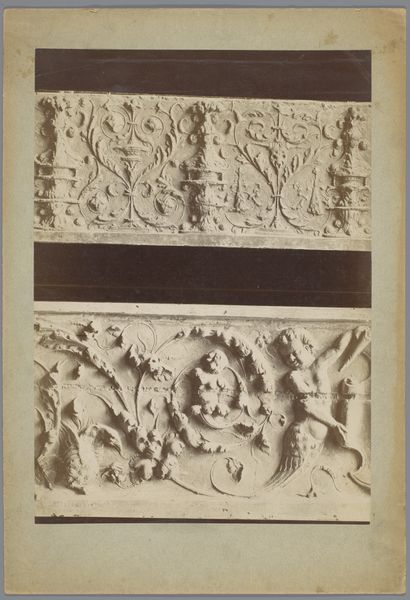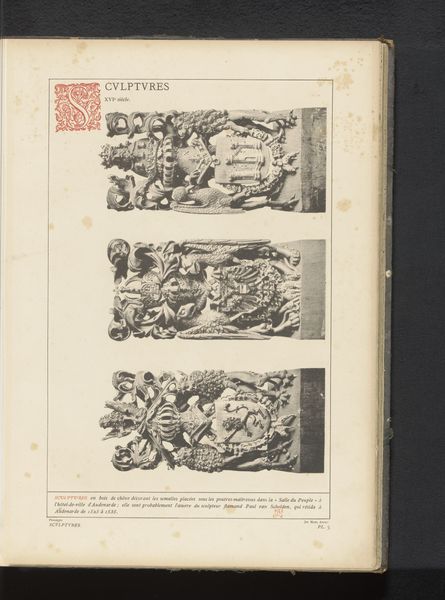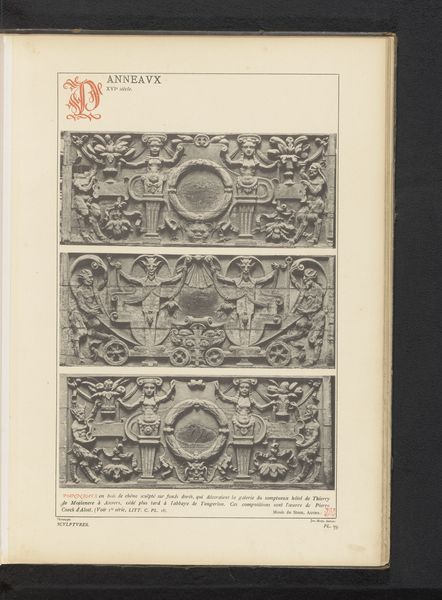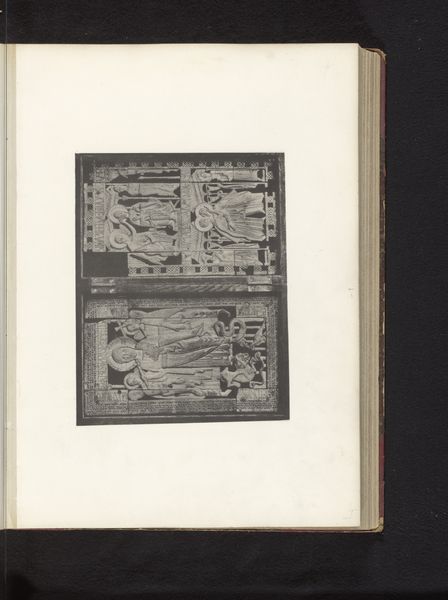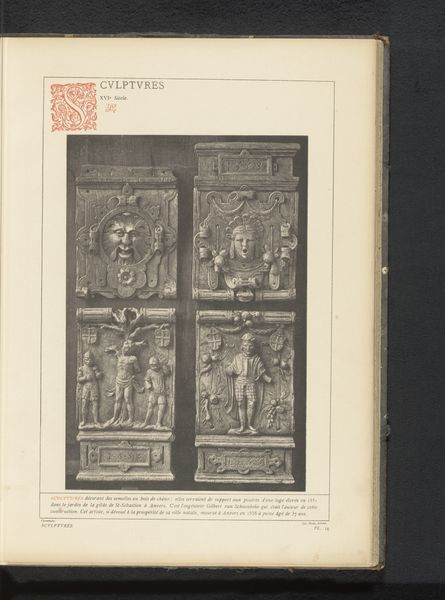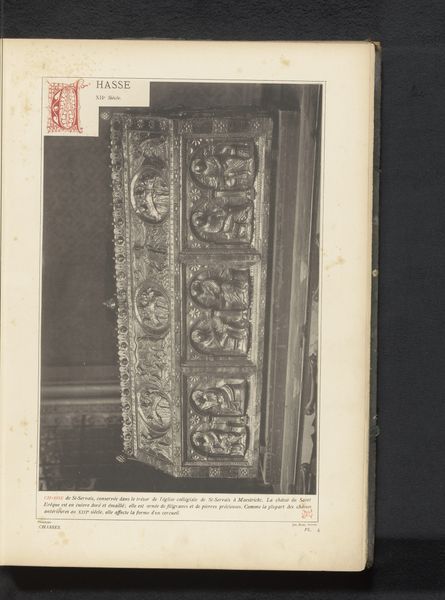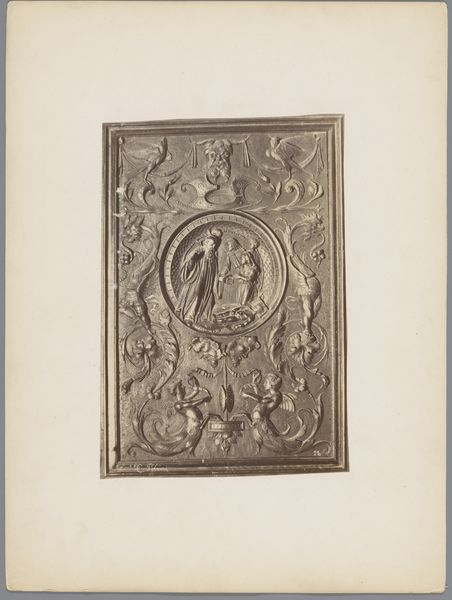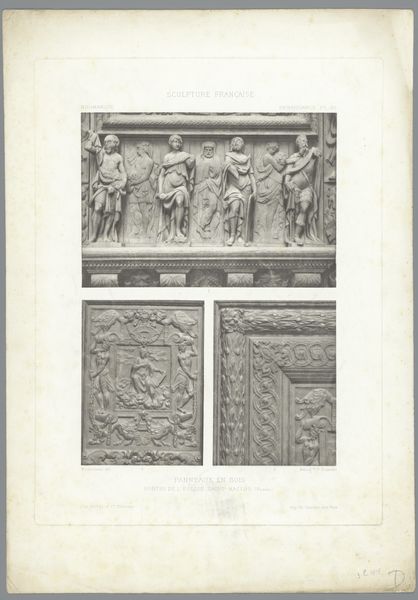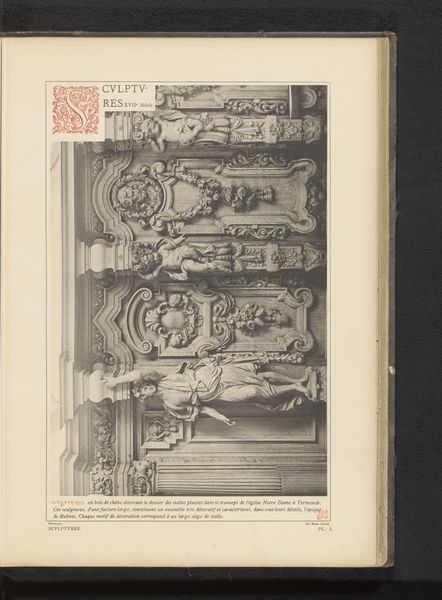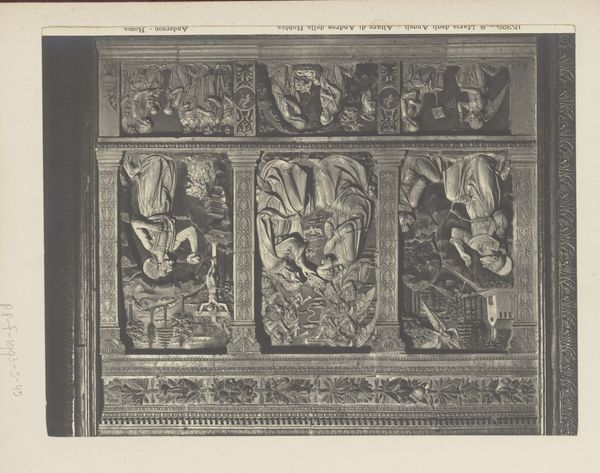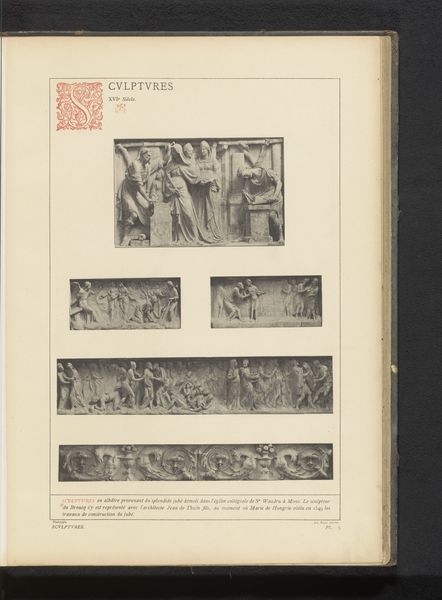
print, etching, relief, sculpture
#
ink paper printed
# print
#
etching
#
relief
#
11_renaissance
#
sculpture
#
history-painting
Dimensions: height 445 mm, width 318 mm
Copyright: Rijks Museum: Open Domain
Editor: So, this print is titled "Drie reliefs afkomstig uit het Kasteel van Blois" by Mèdèric Mieusement, dating from around 1875 to 1900. It looks like it depicts three different relief carvings from the Chateau de Blois. What strikes me most is the ornate detail. I mean, wow! But what do you see in this piece from a historical context? Curator: This print presents an interesting case of the public role of art and documentation. Mieusement was capturing, through printmaking, elements of French Renaissance architecture, specifically from a château with significant political history. Consider the Chateau de Blois: it was a royal residence, a site of power. Editor: Right, powerful figures lived there! Curator: Exactly. Now, think about late 19th century France. What role would images of royal residences play in the construction of national identity after periods of revolution and shifts in power? Do you think these images glorify or perhaps romanticize the past? Editor: I guess a little bit of both? There is certainly that idealized look about them, like history is settled, which feels staged. How can the photograph and reproductive prints create a sense of ownership? Curator: Precisely! Mieusement’s prints made these historically loaded architectural details accessible. They allowed a wider audience to consume, and in a sense, possess, aspects of France's royal past. What does making art about places, instead of people, signify, during this moment of history? Editor: Hmmm... so the printing process here allowed a far wider distribution, sort of like public domain today? Curator: A crucial point! These prints democratize access to what was once exclusively the domain of the aristocracy. Also consider, this is “French Sculpture", therefore sculpture becomes synecdoche, that stands in for the grandeur of a place that also speaks about a whole history. How do you view the political consequences of a past "reproduced"? Editor: It's like claiming that royal history, maybe not necessarily endorsing it but showcasing it as part of a shared cultural heritage. I had never considered the political weight of simply documenting architecture like this. Thank you for making me aware! Curator: My pleasure. This exercise in reproductive images also showcases photography as political, with access for all.
Comments
No comments
Be the first to comment and join the conversation on the ultimate creative platform.
